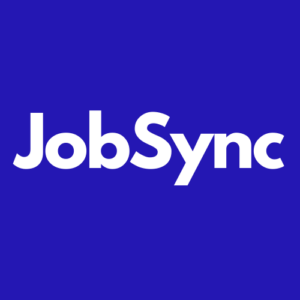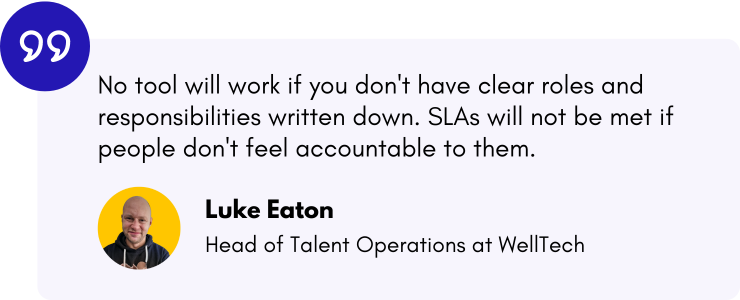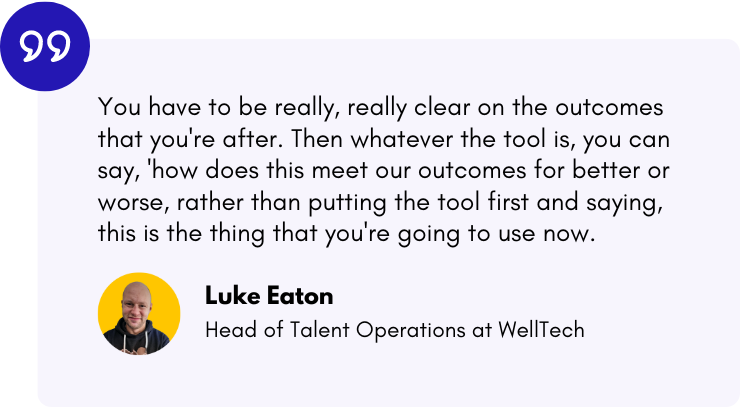
Good tools are everywhere in talent acquisition. While it’s foolish or even dangerous to fix a broken process with more technology, you can fix broken technology with better technology—as long as the process is solid.
Whenever there’s a problem in the talent acquisition (TA) process, you’ll hear the following debate play out:
“We can’t automate posting our jobs because we need Easy Apply.”
“We’re wasting so much time trying to schedule interviews. We need a tool to automate this process without our recruiters having to spend hours on it.”
“We can’t just keep adding more tools. We need to fix our process first and then find the right tool to support it.”
“But tools are the things people actually use. The process is just theoretical.”
“No, the process is the foundation for how we work. We need to get that right before adding any more tools.”
When did things get so complicated?
We spoke to Luke Eaton, Recruiting Operations Expert at WellTech, and Ben Abear, Recruiting Operations Leader at Google Fiber, to get their perspectives on this never-ending debate.
The conversation was part of a wider discussion about unlocking the power of data in recruiting. Tooling was just a small part of that conversation, but it was a really important one for anyone grappling with TA inefficiencies. The roundtable was chock full of insights—if you missed it, you can watch the recording here.
Tools Are Not Solutions!
Recruiting and human resources technology is more powerful and easier to use than ever. Any organization can acquire and quickly deploy an Applicant Tracking System, recruitment CRM, Human Resources Information System, scheduling tools, interviewing tools, chatbots, AI for sifting resumes, and any number of off-the-shelf solutions that promise to speed up and automate just about every process you can think of.
These tools are so ubiquitous and well-marketed that TA tends to see them as a cure-all. “Tools can often be seen as magic bullets,” Eaton says. “Everyone’s got their own little utopian view of what the tool is going to be in their head, and they can all be divorced from each other—and from reality, quite frankly.”
Both our experts were adamant that technology can and has transformed TA for the better. But the tool itself is not a solution. “It makes solutions orders of magnitude easier to implement,” Eaton says. “But like a hammer isn’t a solution; it just makes it easier for the builder to bang in the nails.”
If You Don’t Understand Your Process, The Tool Will Not Set You Free
Both Abear and Eaton emphasized the importance of understanding your processes and all the bottlenecks and constraints within them before implementing any new tools. If you don’t know the root cause of inefficiencies, then you don’t know what tool will solve them—and you could “end up spending money on a solution that actually makes your problems worse,” Eaton says.
Eaton shares the story of an organization he worked with. Recruiters said that they “couldn’t wait” for a new ATS implementation because of its interview automation features, which they said would save them four hours a day. Based on that time savings, the team sold this technology to the CFO.
“I asked, ‘What’s the matter with the interviews now?’ And they said, the hiring manager never turns up for the interview. They keep rescheduling. Well, that’s not a tooling issue; it’s a governance issue. Only a conversation with the stakeholder will fix that. So a bunch of people are waiting for a tool to make the hiring manager magically turn up to their interview!”
For Eaton, governance, not technology, is the key to understanding and optimizing your TA processes. “No tool will work if you don’t have clear roles and responsibilities written down. SLAs will not be met if people don’t feel accountable to them,” he says. “Governance has to be baked into any recruitment process. If we do that, we can maximize efficiency gains over time.”
Tech Could Speed Up The Pace Of Failure
Nicholas Kontopoulous from Adobe articulated this conundrum perfectly when he devised the equation OT + NT = EOP.
That is, Old Thinking + New Tools = Expensive Old Processes.
When you add a tool without first fixing the underlying process, all the old problems will still exist, but they now have a hefty technology price tag.
Do you really need an AI tool to screen thousands of (unqualified) resumes? Or might it be better to have a process where a few qualified candidates are submitted for human review?
“You have to start with the process and your ATS or your CRM is not the process,” Abear says. “Your process should be something where you sit down and process map everything that you need and want to have happen. And if an activity isn’t valuable, remove it, get rid of it, stop doing it, don’t start doing it – and really think about what ‘good’ looks like.”
The danger of mapping out your process is that technology providers often seep their perspective into the process definition to better align with technology. When 10 or 15 different technologies all try to influence your process, is it really your process?
If you haven’t mapped the process, independent of the technology, how will you know if the tool you’ve just bought is actually working?
Failure To Launch Fears Exacerbates The Problem
One of technology providers’ biggest fears is tools ‘failure to launch. Vendors recognize that change management is required to ensure that users adopt the technology and use it correctly, and enterprise providers have built entire consulting divisions to show users how to use the tools in their processes.
In other words, they train companies to adapt to the tool rather than customizing the tool to work for the company. The training often comes from a place of ‘you need to use this’ rather than ‘how can we modify this so it works for you’—a classic square peg, round hole scenario.
“You have to be really, really clear on the outcomes that you’re after,” Eaton says. “Then whatever the tool is, you can say, ‘how does this meet our outcomes for better or worse, rather than putting the tool first and saying, this is the thing that you’re going to use now whether it’s going to increase efficiency or whether it’s going to decrease efficiency or candidate experience.”
Good Outcomes Start With Good Processes
While new technology implementations are a great opportunity to upgrade and improve your processes, you must first ask hard questions about your processes. Are they in place for the candidate’s benefit, the recruiter’s benefit, the business’s benefit, or because that’s how things have always been done? Are they properly documented (or documented at all)? Do you know where the gaps, inefficiencies, and dependencies are? Can you identify friction points, why they exist, and if they are helpful or contributing to a problem?
“Before you go out and create an RFP for a new tool, you need to know what problem are you solving?” Abear says. “And then what are the trade-offs? Because it’s ultimately going to create something somewhere else in your process that may not be what you intended. Are you willing to give that up?!
“What I’ve told multiple vendors is I would prefer to divorce the tool from the conversation,” he says. “Forget about the tool. Your tool might be great, but it might not be the actual problem that I have.”
Too often, new tech looks and sounds sexy, and so it’s added to an already shaky tech stack without a clear understanding of why it’s being added and how to measure its impact.
So what comes first, the tool or the process? By now, the answer should be clear. Ultimately, you need to get everyone thinking from a process improvement point of view before any technology is introduced. Otherwise, you end up with a more expensive and shinier version of the same old inefficiencies. Or worse, you’ve added the last piece to the Jenga stack that inadvertently stops your entire recruiting engine.




